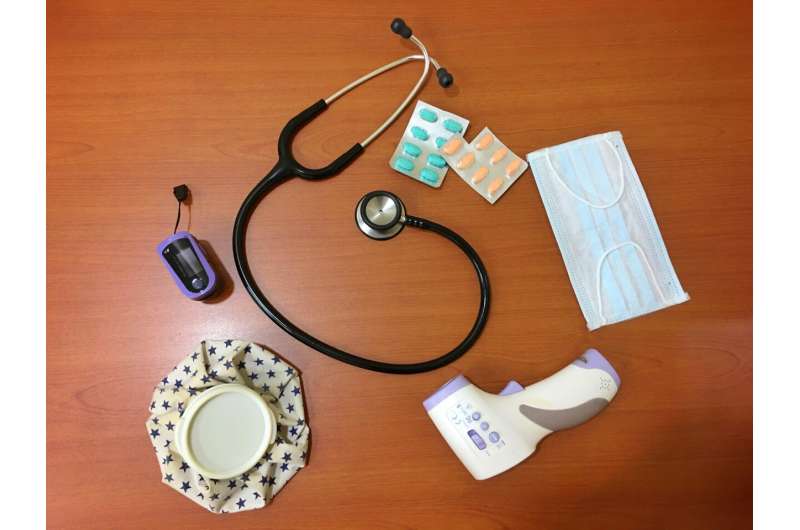This article has been reviewed according to Science X's editorial process and policies. Editors have highlighted the following attributes while ensuring the content's credibility:
fact-checked
peer-reviewed publication
trusted source
proofread
Analysis finds 10% treatment boost needed to shift NHS COVID backlog

The NHS must treat at least 10% more non-emergency hospital cases a month if it is to successfully start reducing the hefty backlog caused by the pandemic, according to a new analysis.
From February 2020 to October 2022, the waiting list for non-urgent care grew by 2.6 million cases—a projected 1.8 million more than if the pandemic had not hit.
Experts say the build-up of cases will not be cleared before the end of 2025 even if capacity is increased by the 30% compared to pre-pandemic levels outlined in NHS England's recovery plan.
In the early stages of the pandemic, the NHS was forced to postpone elective, or non-urgent, treatments to focus resources on patients seriously unwell with COVID-19. This has led to a backlog of people waiting to receive care, with many requiring several referrals for multiple conditions.
To estimate the extent of disruption, researchers from the Universities of Edinburgh and Strathclyde looked at the number of referrals waiting to be treated each month in England from January 2012 to October 2022.
The waiting list rose from 2.4 million in January 2012 to 4.6 million at the start of the pandemic in February 2020, increasing by about 275,000 referrals per year. This steady rise suggests the service was already gradually declining before the pandemic.
COVID-19 then intensified the decline, researchers say. By October 2022, there were more than 7.2 million referrals waiting to receive non-urgent treatment.
Experts warn this is likely to be a substantial under-estimate of the backlog because of the anticipated large numbers of people yet to come forward for care following the pandemic.
An estimated 10.2 million fewer referrals were made to elective care from the beginning of the pandemic to 31 October 2022, according to the study.
How many of these missing patients return for care is one of the biggest unknowns when predicting future waiting list numbers.
The research team simulated a range of scenarios based on between 25% and 75% of missing patients seeking health care. This allowed scientists to model the outcome of several increases in capacity on waiting list numbers.
The findings illustrate the importance of resilience within the health care system to minimize the impact of any future emergencies on the provision of routine care, researchers say.
Dr. Syed Ahmar Shah from the University of Edinburgh's Usher Institute, who led the study, said, "The health care system was struggling to keep up with the demand many years before the pandemic, and the COVID-19 pandemic only aggravated the problem. Moving ahead, it is evident that we cannot afford to leave our health care systems strained; instead, we must enhance their resilience to ensure better preparedness for any future emergencies."
The study is published in The Lancet journal.
More information: Syed Ahmar Shah et al, Effects of the COVID-19 pandemic on NHS England waiting times for elective hospital care: a modelling study, The Lancet (2024). DOI: 10.1016/S0140-6736(23)02744-7




















